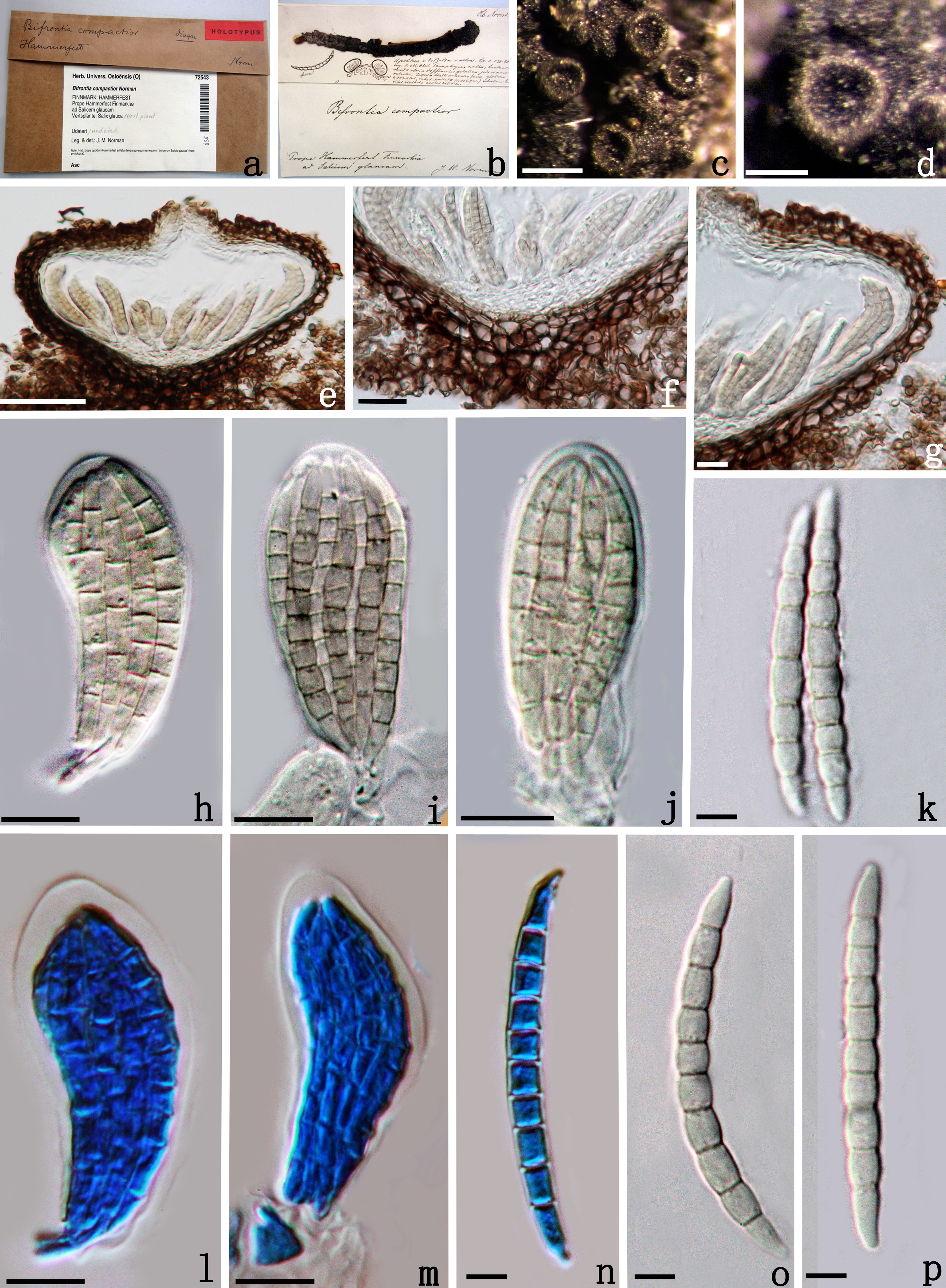Bifrontia compactior Norman, Bot. Notiser: 19 (1872).
Saprobic on dead wood of Salix glauca. Sexual state:Ascomata100–150 µm high×190–250 µm diam., superficial, seated on a subiculum, solitary or gregarious, globose to subglobose, black, cupulate, turbinate, collapsing when mature or dried, central ostioleambiguous. Peridium thick-walled, 35–50 µm wide, composed of 3–4-layers of brown cells of textura angularis, innermost layers of 2–3-layers of hyaline cells of textura subprismatica. Hamatheciumcomprising sparse pseudoparaphyses.Asci55–100 × 14.5–25 µm ( = 75 × 17 µm, n = 20), 8-spored, bitunicate, fissitunicate, fusiform, broadly rounded above, thick-walled, narrow towards at base, short-pedicellate, arranged in rows on basal cells of ascomata. Ascospores 40–60 × 4–6 µm ( = 48 × 5 µm, n = 10), overlapping fasciculate, long-fusiform, straight to slightly curved, 7–9-septate, constricted at septa, pale brown, smooth-walled. Asexual state:Unknown.
Material examined: NORWAY, Finnmark, Hammerfest: Prope Hammerfest Finmarkiӕ, on wood of Salix glaucaL. (Salicaceae), J.M. Norman,date of collection unknown (O-F72543, holotype).
Notes: Bifrontiawas introduced by Norman (1872) with two species but neither was designated as the type for the genus. Bifrontia compactiorNorman was listed first in the diagnosis for the genus and is typical of the protologue. Therefore we designate herein B. compactior as the lectotype of the genus. This species has typical characteristics of Tubufiaceae except that the hamathecium rarely includes pseudoparaphyses. We refer this genus to Tubeufiaceae.
Fig. 1 Bifrontia compactior (O-F72543, holotype). a, b Herbarium material and labels. c, d Black ascomata on host surface. e Vertical section of ascoma. f, g Close up of peridium and sparse pseudoparaphyses.h-j, l, m Asci with ascospores – note l, m, stained in cotton blue reagent; k, n-p Ascospores; note n stained in cotton blue reagent. Scale bars: c=200µm, d=100µm,e=50µm,f=20µm,g=10 µm,h-j, l-m=10µm, k, n-p=5µm

